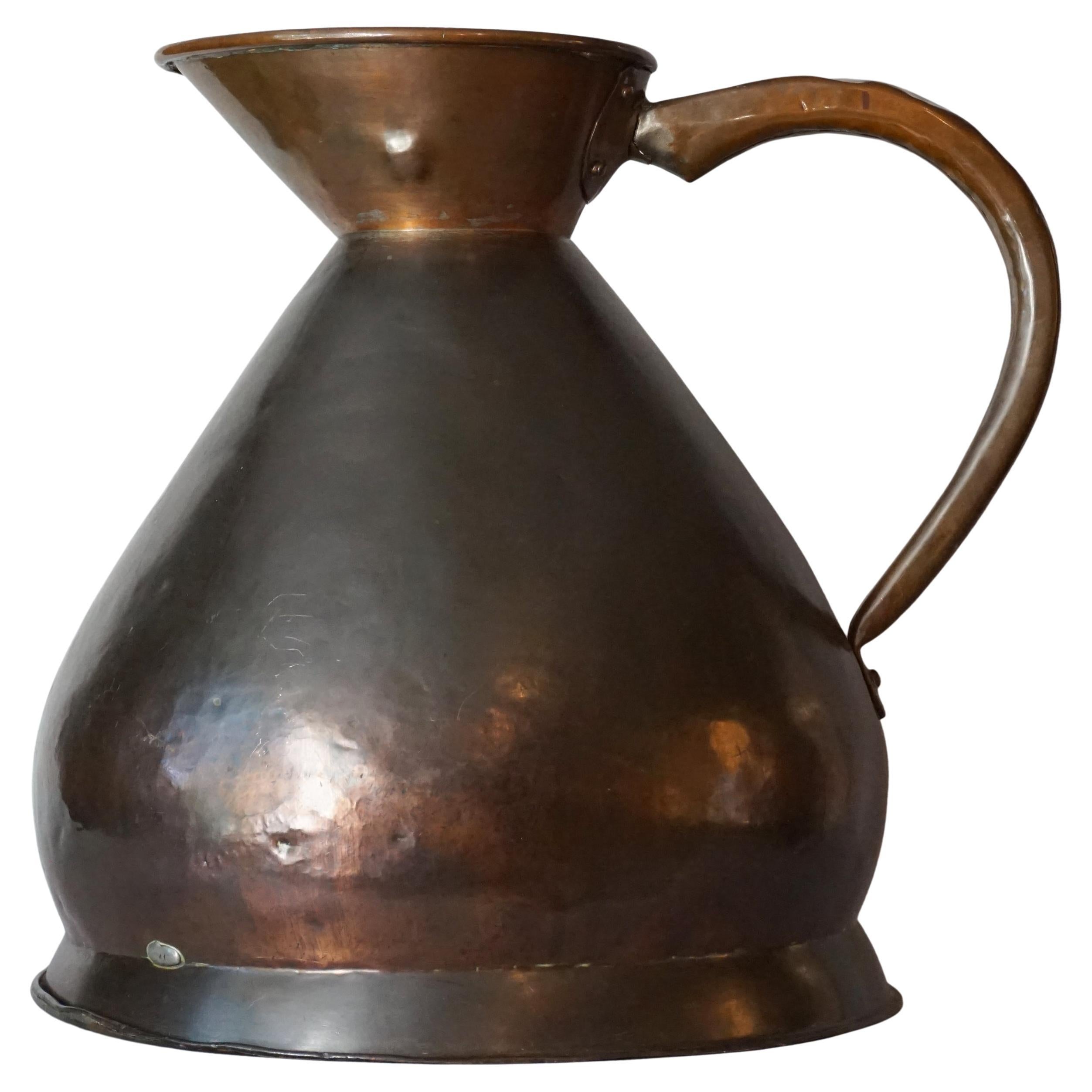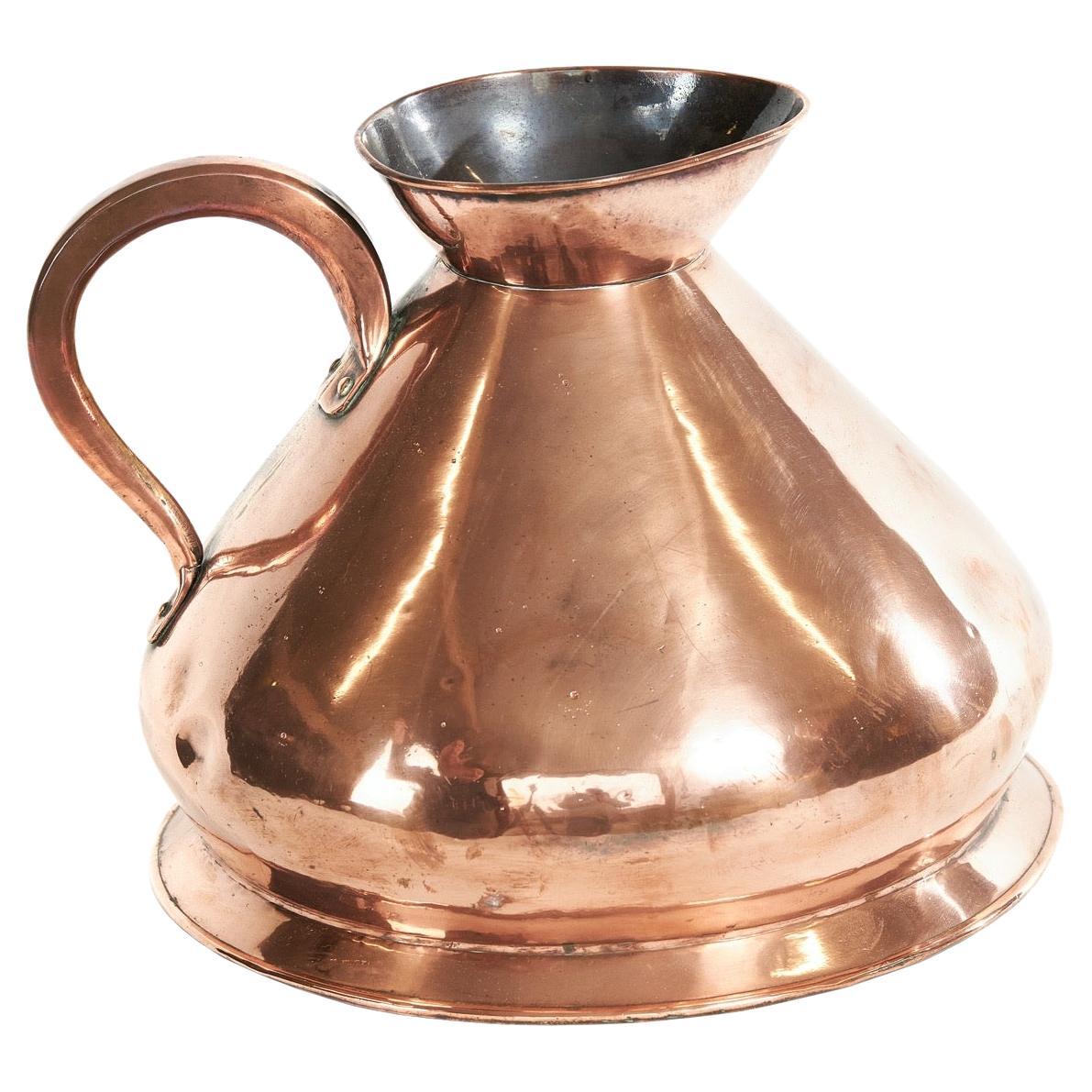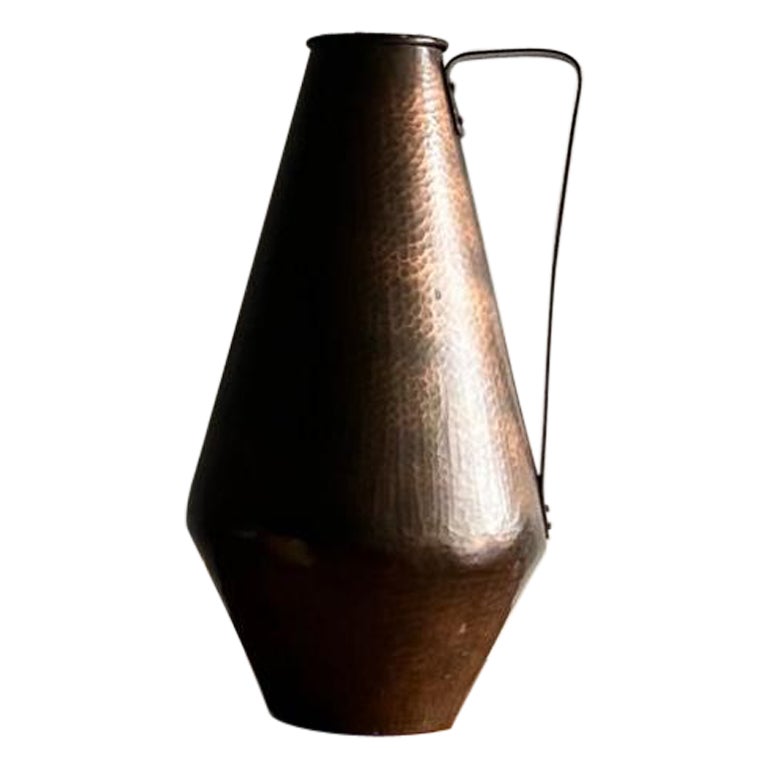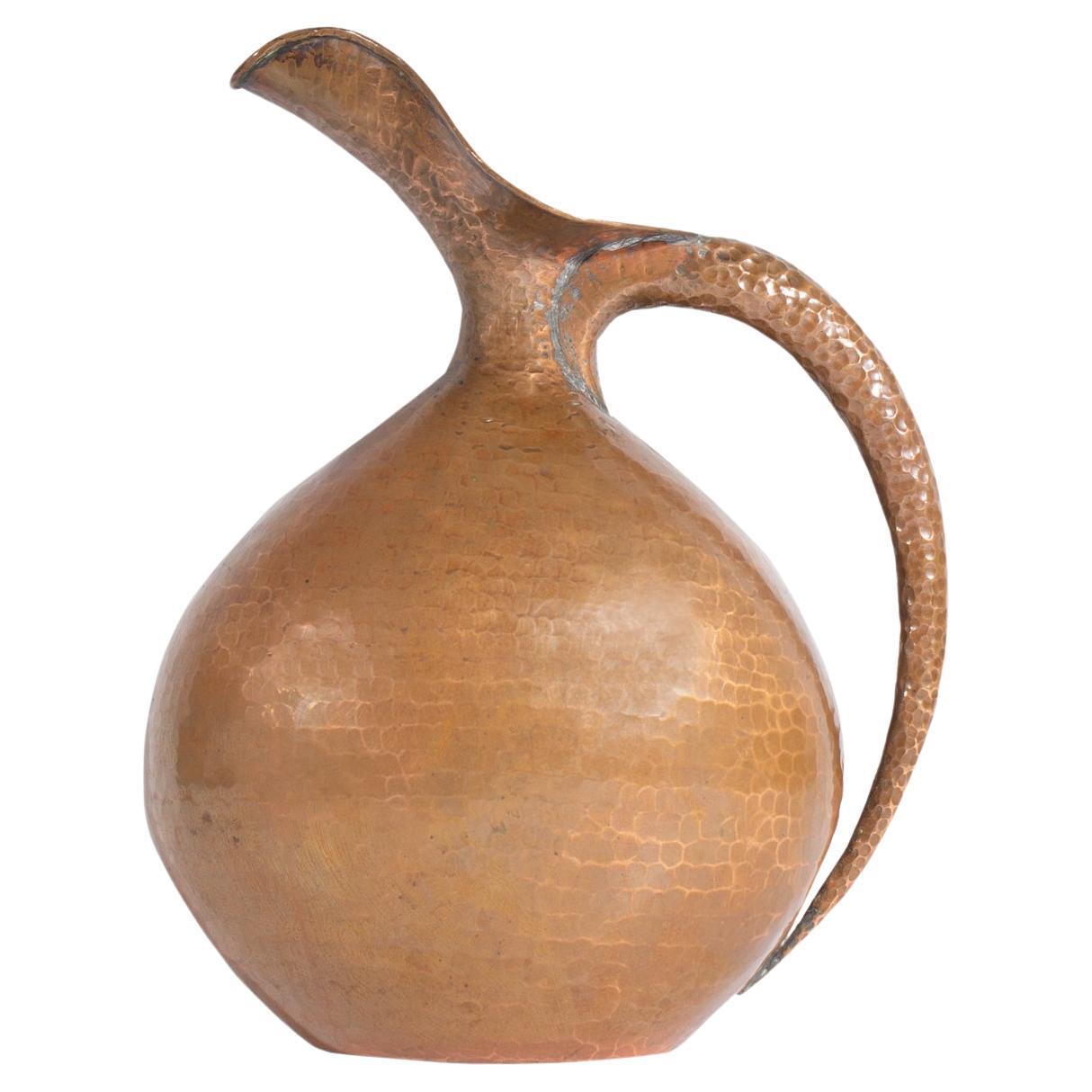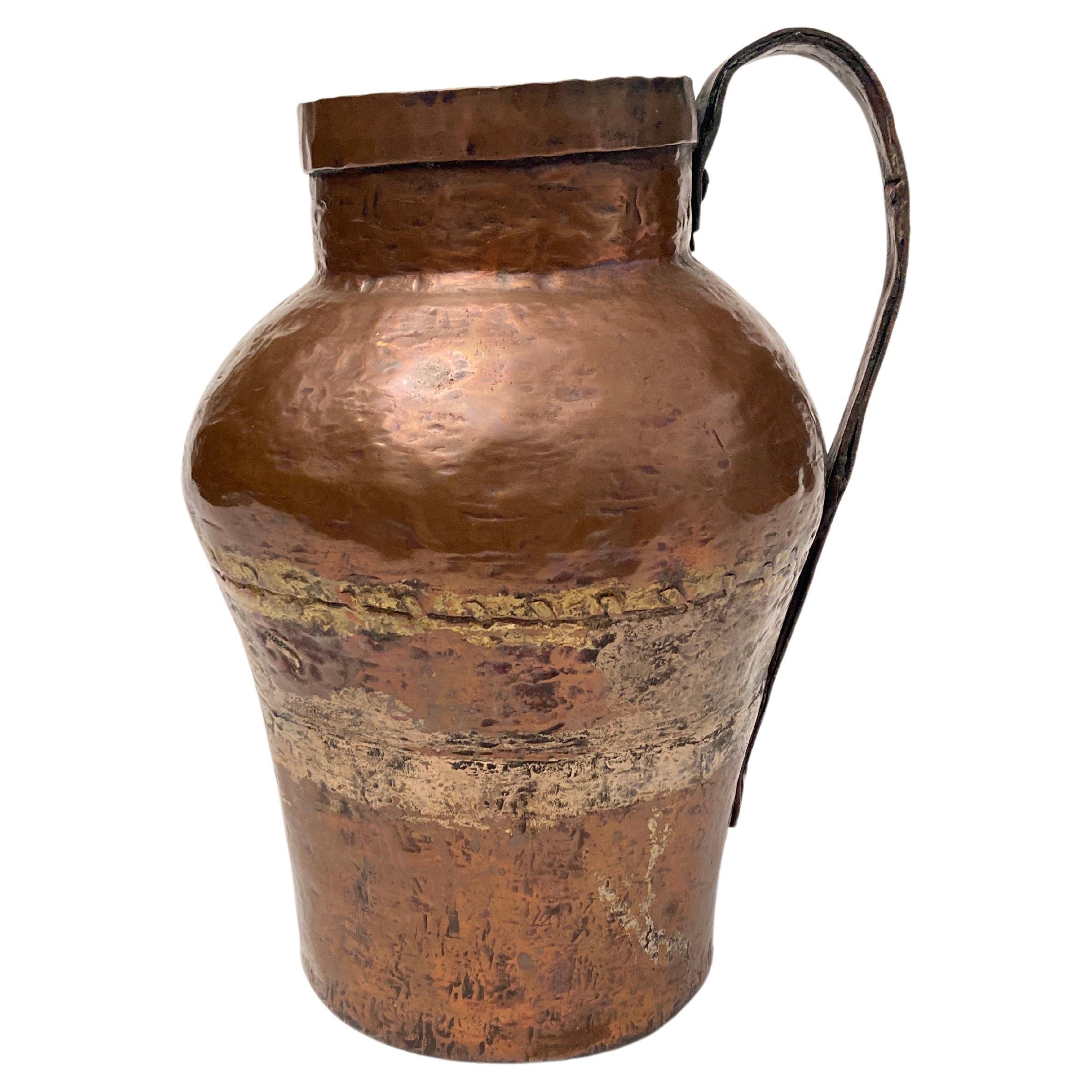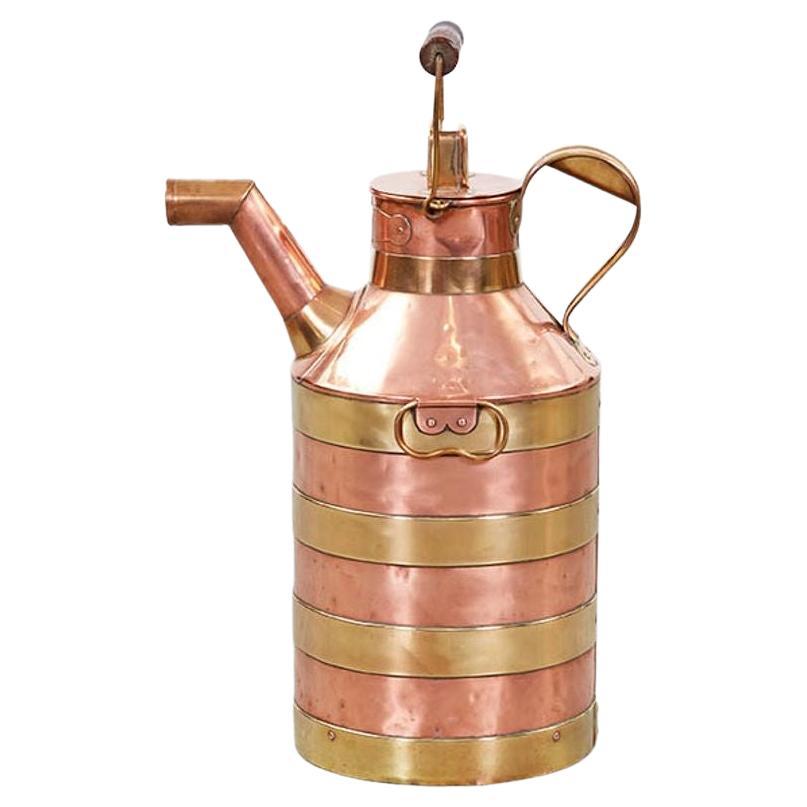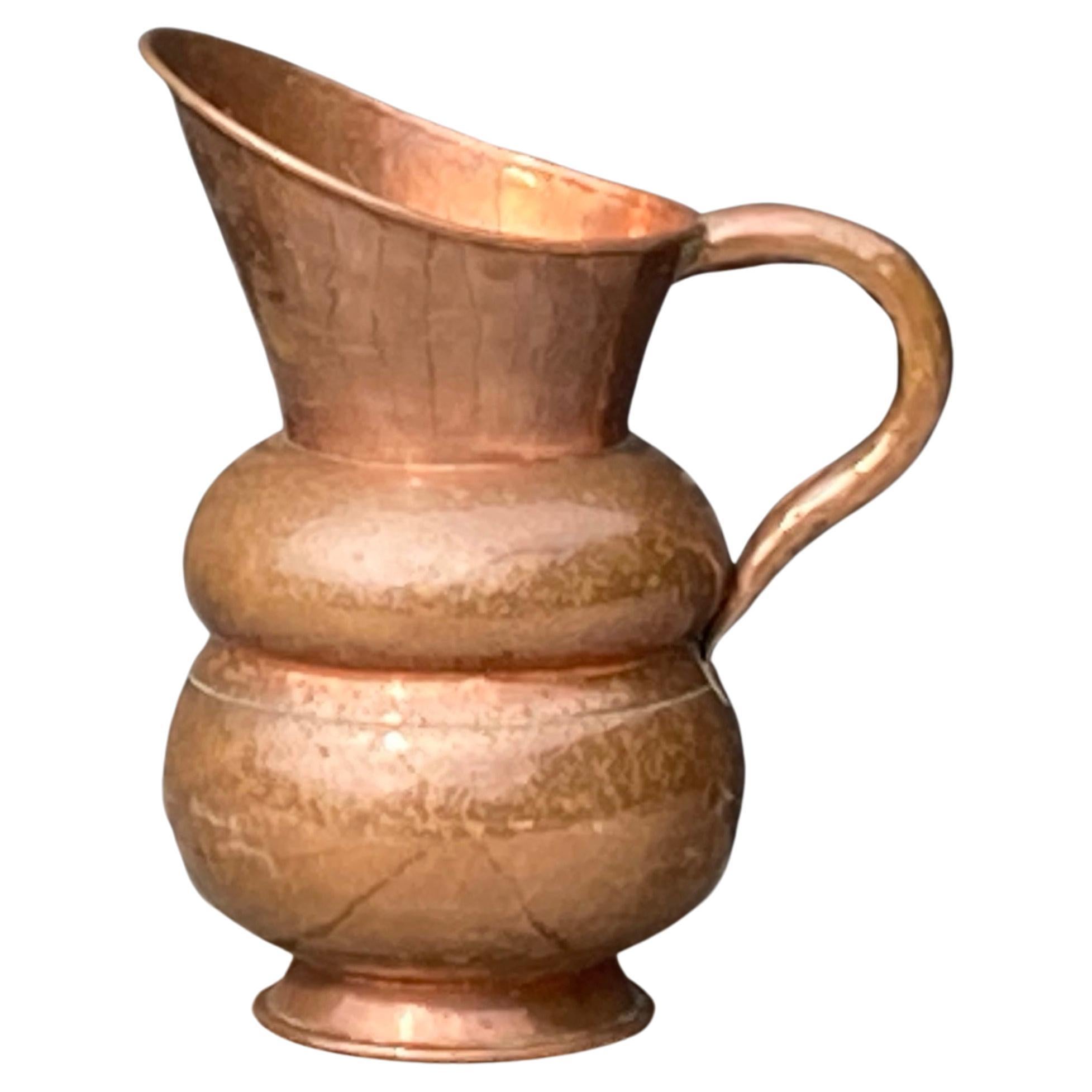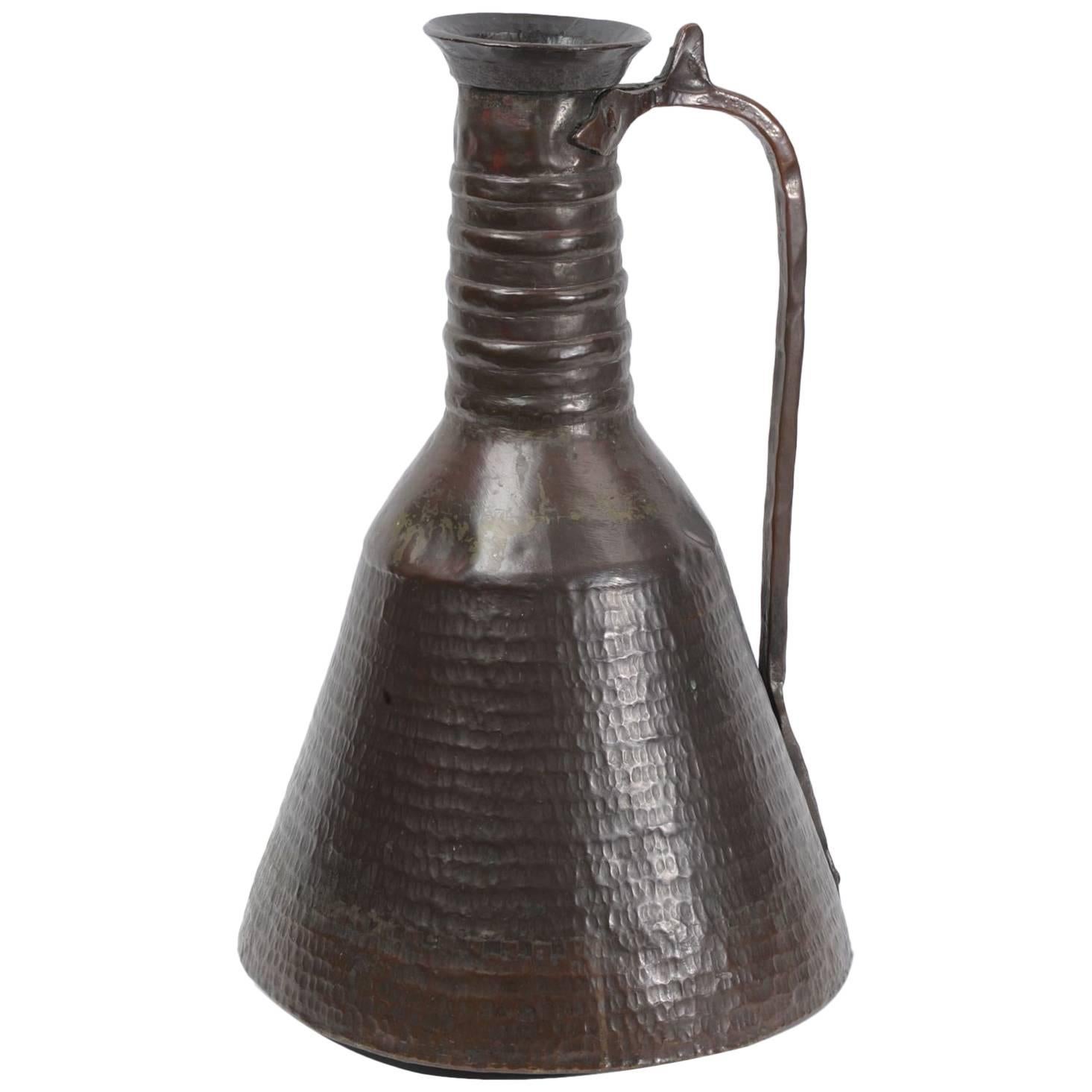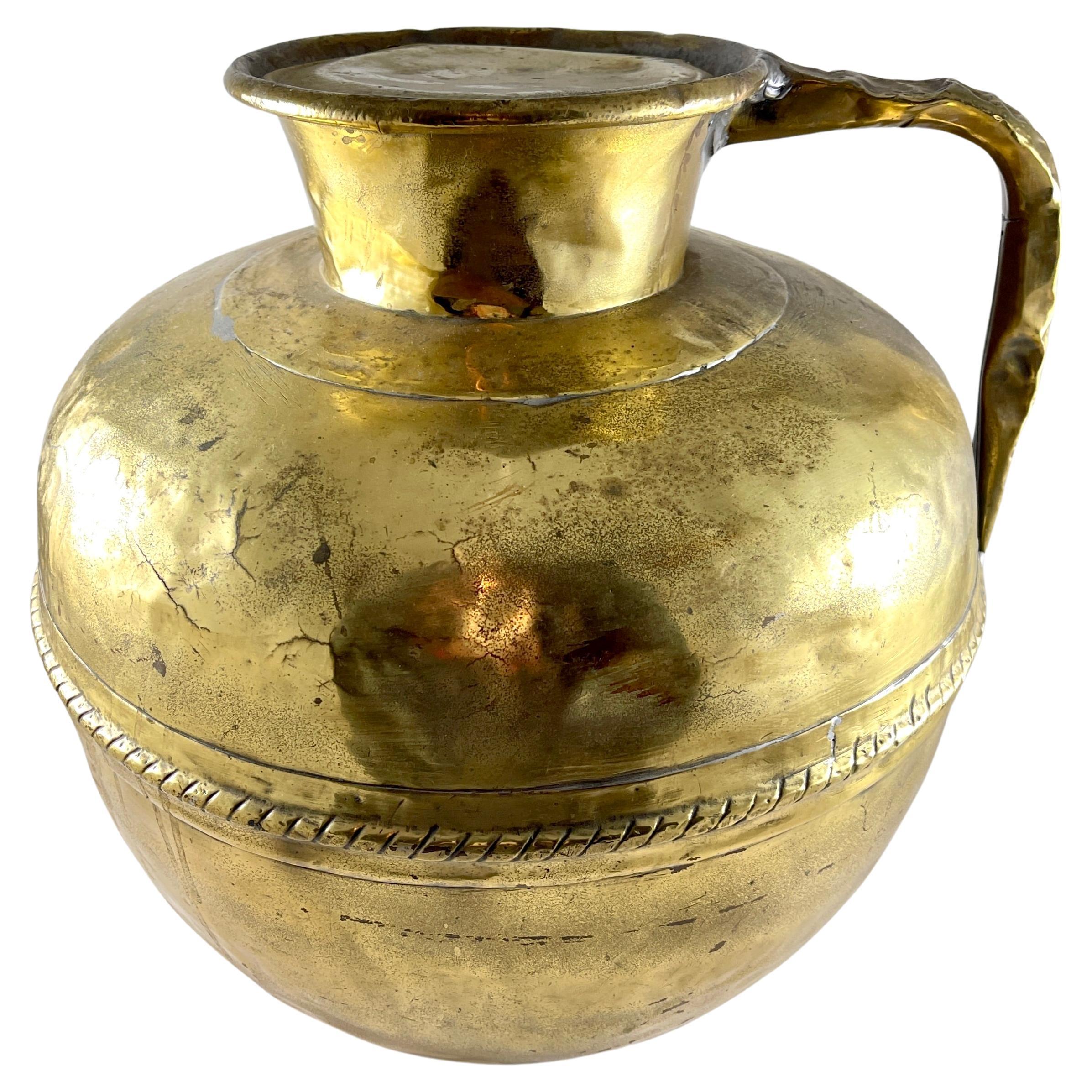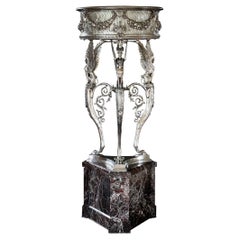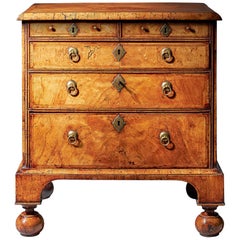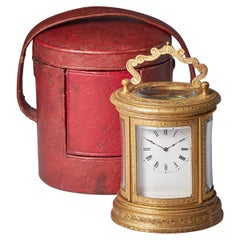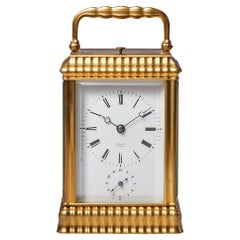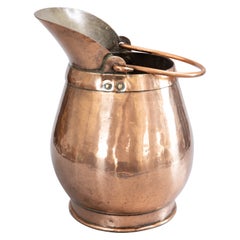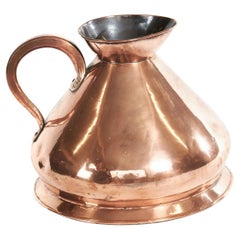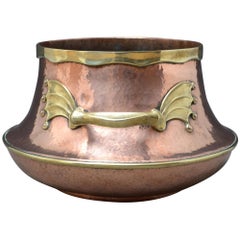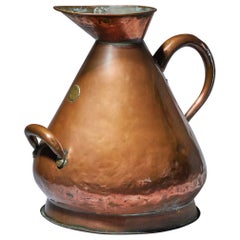
Extremely Large Victorian 5 Gallon Hammered Brass Copper Milk Jug / Pitcher
View Similar Items
Want more images or videos?
Request additional images or videos from the seller
1 of 9
Extremely Large Victorian 5 Gallon Hammered Brass Copper Milk Jug / Pitcher
About the Item
- Dimensions:Height: 18.51 in (47 cm)Diameter: 15.75 in (40 cm)
- Style:Victorian (Of the Period)
- Materials and Techniques:Brass,Hammered
- Place of Origin:
- Period:
- Date of Manufacture:1850-1900
- Condition:Wear consistent with age and use.
- Seller Location:Oxfordshire, GB
- Reference Number:1stDibs: LU4936227735042
About the Seller
5.0
Recognized Seller
These prestigious sellers are industry leaders and represent the highest echelon for item quality and design.
1stDibs seller since 2019
24 sales on 1stDibs
Typical response time: 19 hours
Associations
LAPADA - The Association of Arts & Antiques Dealers
Authenticity Guarantee
In the unlikely event there’s an issue with an item’s authenticity, contact us within 1 year for a full refund. DetailsMoney-Back Guarantee
If your item is not as described, is damaged in transit, or does not arrive, contact us within 7 days for a full refund. Details24-Hour Cancellation
You have a 24-hour grace period in which to reconsider your purchase, with no questions asked.Vetted Professional Sellers
Our world-class sellers must adhere to strict standards for service and quality, maintaining the integrity of our listings.Price-Match Guarantee
If you find that a seller listed the same item for a lower price elsewhere, we’ll match it.Trusted Global Delivery
Our best-in-class carrier network provides specialized shipping options worldwide, including custom delivery.More From This Seller
View All19th Century Silvered Bronze Athénienne Jardinière by Ferdinand Barbedienne
By Ferdinand Barbedienne
Located in Oxfordshire, United Kingdom
A French silvered-bronze athénienne by Ferdinand Barbedienne, Paris, last quarter 19th century with a revolving liner, the frieze applied with bucrania suspending ribbon-tied berried laurel swags above a border of bellflowers on a stippled ground above three seated female sphinxes issuing stylised foliage and scrolls on lion monopodia cast with the mask of Hercules, scrolling foliage and anthemions joined by stretchers, raised on a concave-sided triform marble base on a further thin silvered-bronze base, inscribed to the tripod base 'F. BARBEDIENNE'
Measures: 103.3cm. high, 41.5cm. diameter; 3ft. 4 3/8 in, 1ft. 4 1/4.
This impressive athénienne is a key reminder of the longevity of a particular model and design’s success from Antiquity through to the 19th century and up until this day. Typically known as the ‘Trépied du Temple d’Isis’, this athénienne is designed after the Roman antique originally found at Pompeii and now at the Museo Archeologico Nazionale, Naples (fig.1). From being for example an inspiration for the baptismal font of Napoléon’s son in 1811, this model was the inspiration to many highly skilled makers throughout the 19thcentury such as the Manfredini brothers from Milan and of course the Parisian well-established bronze founder Ferdinand Barbedienne who executed the present example.
The Temple of Isis was a Roman temple dedicated to the Egyptian goddess Isis and was among one of the first discoveries during the excavation of Pompeii in 1764. Certainly considered as one of the most elegant examples of antique tripods, the existence of this model was then popularized to the rest of Europe via prints, one of the first being by Giovanni Battista Piranesi in 1779. This type of tripod was also popularised by an engraving in C. Percier and P. Fontaine’s, Receuil de Décorations Intérieures of 1801. Interestingly, there is also a watercolour now in the Musée Carnavalet, Paris, showing this type of tripod displayed at the 1801 Exposition des Produits de L’Industrie in the Louvre.
The passion for Greek and Roman Art in the 19th century.
The discovery of Pompeii and Herculaneum around the middle of the 18th century gave rise to a new passion for Antiquity and the excavated masterpieces renewed the repertoire of fine and decorative arts and served as models for Neoclassicism. Members of the aristocracy as well as connoisseurs, particularly in England, completed their education by undertaking a ‘Grand Tour’ of Italy and often fell victim to the recently unearthed Greek and Roman artefacts...
Category
Antique 19th Century French Grand Tour Planters, Cachepots and Jardinières
Materials
Marble, Silver Plate, Bronze
Extremely Rare George I Walnut Chest of Small Proportions on Ball and Bracke
Located in Oxfordshire, United Kingdom
The cross-grain moulded and feather banded book-matched top sits above two short and three long feather-banded drawers, each book-matched, lined in oak and framed to the carcass with a double-D cross-grain moulding, raised on what is known as the ball and bracket foot.
The chest comes from a small group of pieces to bear the ball and bracket foot and perhaps most famously, by Coxed and Woster...
Category
Antique Early 18th Century English George I Commodes and Chests of Drawers
Materials
Walnut
19th Century Eight-Day Miniature Gilt-Brass Carriage Clock with Original Case
Located in Oxfordshire, United Kingdom
A charming late 19th century French engraved miniature oval carriage clock with original travelling case.
The petite miniature oval gilt brass ...
Category
Antique 19th Century French Victorian Carriage Clocks and Travel Clocks
Materials
Brass
Unusual Ribbed Eight-Day Repeating Striking Gilt-Brass Gorge Case Carriage Clock
Located in Oxfordshire, United Kingdom
Case
The clock has a gilt-brass case which is a variation on the gorge case in that the top and bottom are ribbed, which adds to its elegance. It has bevelled glass windows on all sides so that the movement is almost entirely visible. The gilt brass platform escapement can be seen through a large rectangular window at the top. The clock is surmounted by a typically shaped carrying handle. At the back is a door giving access to the winding arbors.
Movement
The high-quality spring-driven eight-day movement is constructed between plates. It consists of going and striking trains, as well as alarm. The going train has an English lever...
Category
Antique 19th Century French Victorian Carriage Clocks and Travel Clocks
Materials
Brass
A Large 18th Century George I Gilt-Gesso Pier Glass, Attributed to John Belchier
Located in Oxfordshire, United Kingdom
A Large and Important George I Gilt-Gesso Pier Glass, Attributed to John Belchier, Circa 1725. England.
Divided by the original arched and rectangular soft bevelled mirror plates within a gadrooned and foliate-carved border surmounted by an impressive foliate crest, flanked by profusly carved scrolling acanthus wings above a punch decorated carved frieze.
Provenance
Clopton Hall, Rattlesden, Suffolk
John Belchier
‘The Sun’, south side of St Paul's Churchyard, London; cabinet maker (fl.1699-d. 1753).
This impressive mirror can be confidently attributed to the London cabinetmaker John Belchier based on similarities with two large pier glasses he supplied in 1723 and 1726 to John Meller at Erdigg in Denbighshire, Wales (National Trust; illustrated, Early Georgian Furniture, by Adam Bowett, p.292 plates 6:50-51). Originally destined for the Second Best Bedroom and Best Bedchamber respectively, they now hang in the Saloon. The earlier mirror shares comparable strapwork cresting with double scrolls centering a mask whilst the second incorporates bold, inward-curving scrolls carved in high relief along the upper border of the frame that overlap onto the top edge of the plate. These distinctive, palm-like scrolls appear on other mirrors attributed to Belchier, among them an example in the Untermyer Collection, Metropolitan Museum, New York (46.116), and a girandole mirror also with a central winged cherub mask in the crest sold Sotheby's London, 20 November 2007, lot 13.
John Belchier (d.1753), possibly of Huguenot origin, was born in Oxfordshire and served his apprenticeship with the London Joiners' Company from 1699-1707. By 1717 he was established at 'The Sun' in St Paul's Churchyard, London, where his trade bill described his activities as a supplier of 'All sorts of Cabinet Work, Chairs, Glasses, Sconces, & Coach Glasses’, and another trade bill indicated he ‘Grinds & Makes-up all sorts of fine Peer & Chimney Glasses and Glass Sconces, Likewise all Cabbinet Makers Goods’, suggesting mirrors and sconces were a particular specialty of his workshop. His most significant client was the London lawyer and Master of the High Court of Chancery John Meller (1665-1733) for his country estate at Erdigg near Wrexham, and in addition to pier glasses and sconces Belchier provided a magnificent carved and gilt wood State Bed in 1720 and is believed to have supplied two japanned bureau...
Category
Antique 18th Century English George I Pier Mirrors and Console Mirrors
Materials
Gold Leaf
Striking 19th Century Carriage Clock with a Gilt-Brass Corniche Case by Grohé
Located in Oxfordshire, United Kingdom
Striking carriage clock with a gilt-brass corniche case by Grohé, circa 1880.
A most attractive eight-day striking carriage clock, signed on...
Category
Antique 19th Century French Neoclassical Carriage Clocks and Travel Clocks
Materials
Brass
You May Also Like
1800s Giant English Hammered Copper Georgian 5 Gallon Haystack Jug or Pitcher
Located in Haarlem, NL
Enormous late 18th to early 19th century Georgian copper 5 gallon haystack jug or pitcher, massive tapered body with a large handle. Copper haystack measures...
Category
Antique Early 19th Century British Georgian Vases
Materials
Copper
$1,000 Sale Price
20% Off
Large Early 19th Century French Hammered Copper Jug Pitcher
Located in Pearland, TX
A superb large early 19th century French hand-hammered copper pitcher or jug. This gorgeous jug is solid and heavy weighing over 11 lbs, hand forged with copper rivets, dovetail seam...
Category
Antique Early 19th Century French Pitchers
Materials
Copper
Large Victorian Copper Jug 12 Quartz
By Marquette Coppersmithing Co.
Located in Dereham, GB
Large Victorian Copper Jug 12 Quartz
Hollow Copper Rivited Handle
with Braize seam at back,
LeadCheck seal Stamped VR 12 Quartz
Diameter Base:37cm
Good Original Condition
Recent Pol...
Category
Antique Mid-19th Century British Victorian Jars
Materials
Copper
$542 Sale Price
20% Off
Large Victorian Copper and Brass Vessel
Located in Whaley Bridge, GB
Outstanding 19th century copper and brass vessel of large proportions, having brass collar and substantial brass handles with bat or dragon win...
Category
Antique Late 19th Century English Victorian Planters, Cachepots and Jard...
Materials
Copper
Large Hammered Copper Jug Vase by Eugen Zint Germany, 1930s
By Eugen Zint
Located in Rīga, LV
Beautiful hammered copper jug with a detachable cup for the water.
Additional information:
Country of manufacture: Germany
Period: 1930s-1940s
Dimensions: 56 H cm, D(body/head) 28/1...
Category
20th Century German Arts and Crafts Vases
Materials
Copper
Egidio Casagrande Italian Hammered Copper Pitcher Ewer
Located in Indianapolis, IN
A hammered copper pitcher or ewer designed by the Italian designer Egidio Casagrande (1911-1962). This pitcher has a round body and tapered handle on one side. The underside of the p...
Category
Mid-20th Century Italian Arts and Crafts Vases
Materials
Copper
Recently Viewed
View AllMore Ways To Browse
Large Copper Jug
Large Floor Urn
Antique Brass Pitcher
Antique Milk Pitchers
Hammered Copper Pitcher
Antique Gallon Jugs
Brass Milk Jug
Antique Milk Scale
Antique Milk Scales
Antique Milk Urns
Copper Milk Vessel
Antique Copper And Brass Pitcher England
19th Century Brass Milk Jug
5 Gallon Antique Jug
5 Gallon Jug
Arabic Writing
Large Blue And White Urns
Antique Blue And White Urns
